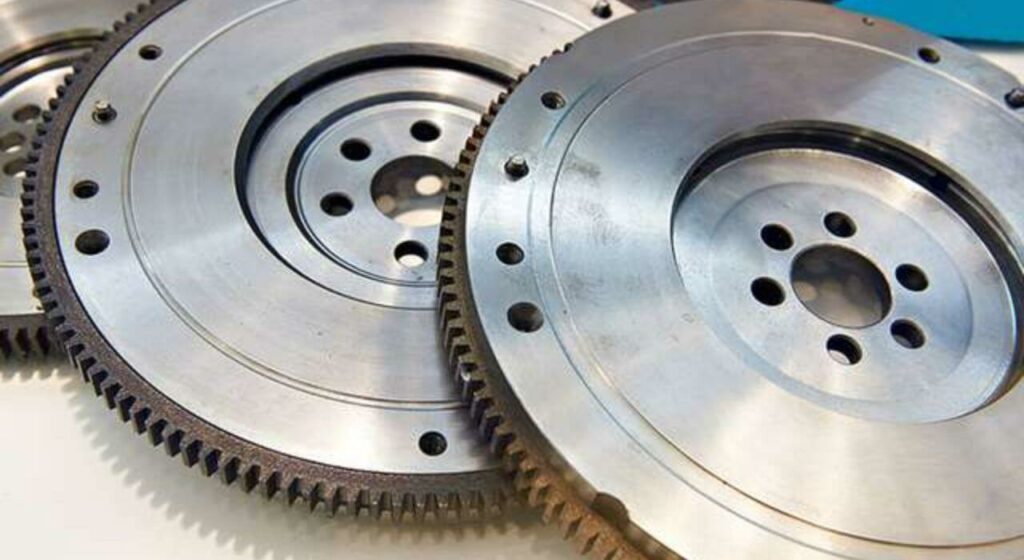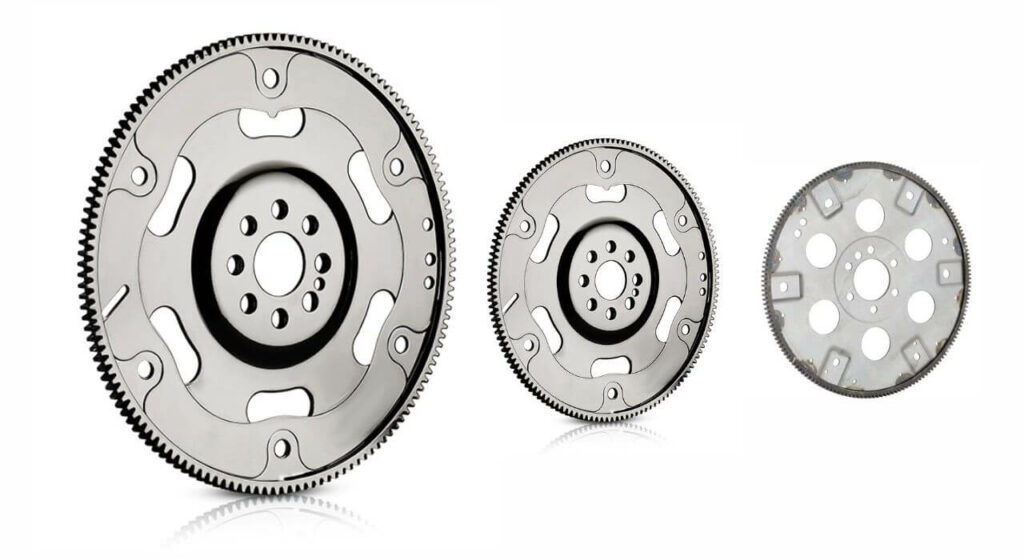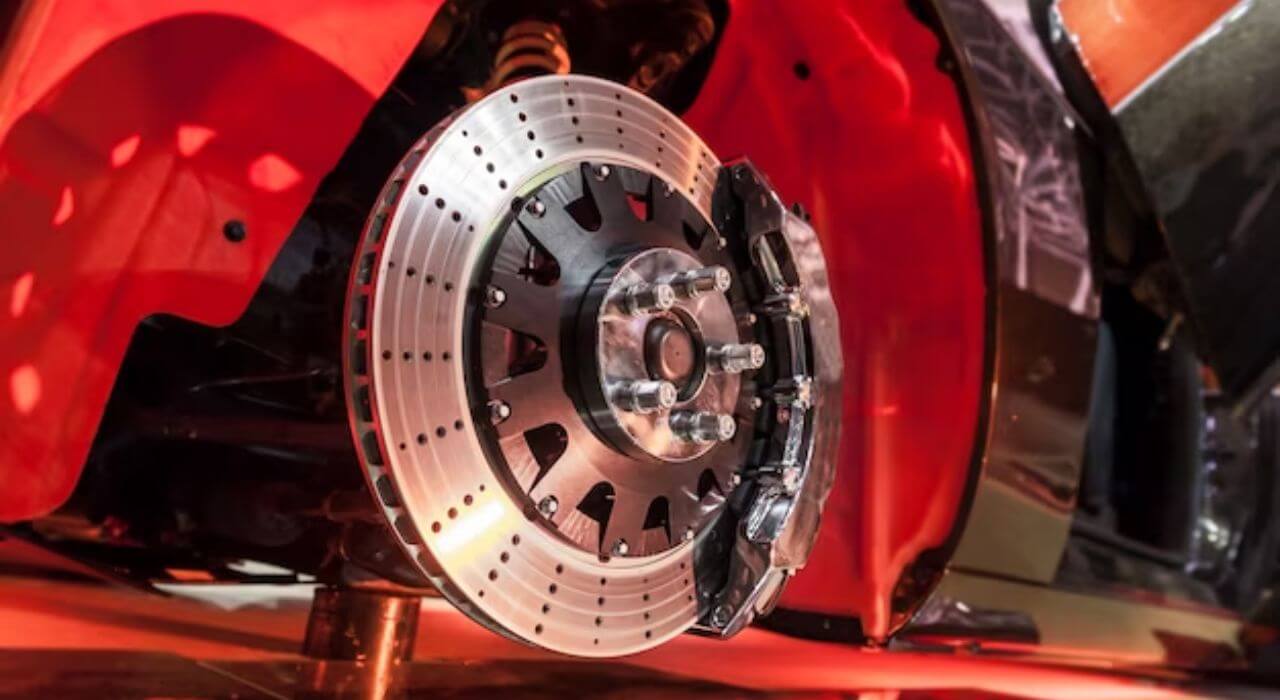Flexplate vs Flywheel: What Are The Differences?- A Guide To Proper Vehicle Maintenance
Flexplate vs flywheel? Which one is right for your engine? Well, it depends on the type of engine you have. In this blog, we’ll dig into the differences between flexplates and flywheels and help you understand when to use each one.
Let’s start with flexplates. They are a type of flywheel, specifically used in automatic transmissions. Flexplates are thin, circular plates that bolt onto the crankshaft of your engine.
Their main job is to transfer torque from the engine to the transmission while allowing for some flex or movement. This flexibility helps absorb shock and vibrations, ultimately prolonging the life of your transmission.
On the flip side, we have flywheels. They are hefty, solid discs also bolted to the crankshaft, but they are used in manual transmissions. Flexplates serve the same purpose as flywheels, but since they don’t flex, they are best for high-power engines.
Now that we’ve got the basics covered, let’s delve deeper into each component and their specific uses.
What Is A Flywheel?
Let’s talk about the flywheel. It’s a big, heavy metal circle in your car’s transmission that’s mostly used in manual cars. The flywheel does three important things.
- First, it gives the clutch something to hold onto.
- Second, it adds weight that helps the engine keep rotating smoothly.
- Finally, it has teeth that the starter motor uses to start the engine when you turn the key.
The flywheel is attached to the engine and spins along with it. The clutch connects to the flywheel’s surface. The flywheel is also important because it stores energy that keeps the engine running smoothly.
When you press the clutch, the throw-out bearing moves and takes away the pressure on the clutch disc. This stops the clutch from getting power from the engine, which is what you need to shift gears without hurting the transmission.
What Is A Flexplate?
Let’s talk about the flex plate now. It’s another big, round metal plate that’s an important part of your car’s transmission. One thing that sets it apart is that flex plates are usually found in automatic transmissions.
Their main job is to connect the engine’s output to the torque converter. It does the same job as the clutch in an automatic car. Just like the flywheel, the flex plate has teeth around the edges that the starter motor uses to start the engine when it’s not moving.
We can already see some similarities and differences between the two. Since they serve similar purposes, it’s understandable that people often use them interchangeably. However, there are some important differences that we’ll talk about more in the next section.
What Are The Differences Between Flexplate vs Flywheel?
Flywheels and flex plates are two critical components of vehicle transmissions that transfer rotational power between the engine and transmission. These components differ significantly in their design, function, and application.
We’ve put together a guide to help you understand the major differences between flywheels and flex plates. Let’s dive in!
A. Role & Primary Function
The flywheel is a mechanical link between the engine and the clutch assembly, typically found in manual transmission vehicles. It stores rotational energy and transfers power from the engine to the transmission consistently.
On the other hand, the flex plate connects the torque converter to the engine’s crankshaft. It allows for smooth transmission of rotational power in vehicles equipped with automatic transmissions.
B. Shape & Form
Flywheels and flex plates differ noticeably in their shape and form. The flywheel has a larger diameter, is typically cast or billet, and has substantial thickness and weight.
In contrast, the flex plate is much thinner and lighter. It is designed to flex along its primary axis to accommodate the torque converter changing rotational speeds.
C. Attachment To The Engine or Transmission
The flywheel and clutch pedal work together, while both components are bolted directly to the engine’s crankshaft. The flex plate connects to the torque converter as well. It allows for smooth power transfer between the engine and transmission.
D. Mass Distribution & Balancing Methods
The flywheel’s mass is evenly distributed throughout its construction, contributing to smooth engine operation and damping vibrations. The flex plate’s thinner and lighter structure requires a different balancing approach.
Also Check:
- 7 Best Digital Speedometer Options for Your Vehicle.
- 9 Cars Equipped with Life-Saving Blind Spot Cameras.
It focuses on achieving a balanced rotational system to minimize vibrations and maintain stability.
F. Application Considerations
– Engine Types (e.g., Manual vs. Automatic)
The choice between a flywheel and a flex plate depends on the type of transmission in the vehicle. Manual transmission vehicles utilize a flywheel, whereas automatic transmission vehicles require a flex plate.
This distinction is primarily due to the differing mechanical and operational requirements of each transmission type.
– Performance Requirements (e.g., High Torque Applications)
Performance requirements also play a crucial role in determining whether a flywheel or flex plate is suitable. In high-torque applications, such as heavy-duty trucks or high-performance vehicles, a flywheel is often preferred due to its robust construction and ability to handle increased torque loads.
– Vehicle Types (e.g., Passenger Cars vs. Heavy-Duty Trucks)
Finally, the type of vehicle can also impact the choice between a flywheel and flex plate. Passenger cars and light-duty trucks generally use automatic transmissions and therefore require a flex plate.
In contrast, heavy-duty trucks and commercial vehicles usually use manual transmissions with larger flywheels.
Is Your Flywheel Failing?- Here Are 3 Signs Of A Failing Flywheel

Spotting signs of a failing flywheel is crucial for maintaining the health of your vehicle. While modern diagnostics computers provide instant information, relying on your senses can help identify issues early on.
Also Check:
Here are three common indicators that your flywheel might be on the verge of failure:
A. Distinctive Burning Smell
While shifting gears, the clutch interacts with the flywheel and wears out over time. As the clutch pads wear down, the flywheel can also suffer damage. One telltale sign of trouble is a unique burning smell that accompanies a worn-out clutch.
Even though clutches last between 2,000 and 4,000 miles, experiencing a burning smell may indicate more serious problems.
B. Gear Slippage
For novice drivers, the saying “grind ’em till you find ’em” might ring a bell. However, gear slippage can actually point to a worn-out flywheel. Your clutch, flywheel, or transmission might be malfunctioning if you have trouble shifting into the next gear.
Checking the transmission fluid and looking for metal shavings can provide further evidence of a problem.
C. Noticeable Clutch Vibration
When driving, you might feel vibrations throughout the cab that originate from the clutch. This sensation is often caused by a worn-out spring mount mechanism on the flywheel.
If left unresolved, it can significantly affect the flywheel’s performance, especially when the clutch pedal is depressed.
3 Signs Of A Failing Flexplate – Symptoms Of Bad Flexplate

Just like a flywheel, a flexplate is prone to failure but it can be plagued by its own set of issues. In this section, we will list the most common problems that occur due to a worn-out or failing flexplate. Here are the details:
1. Starting Problems
Starting an engine can be a hassle if the flexplate is damaged. If the flexplate is warped, it can damage or wear down the ring gear that helps engage the starter. You will feel it in the engine as if it’s “bogged down” when cranking over.
2. Knocking Sound
A knocking sound is never good, but if it comes from the transmission area, it could indicate a cracked flexplate. A flexplate is attached to the crankshaft via several bolts, where most of the stress will be. The noise will disappear when accelerating as the cracks expand.
3. Vibration
If you feel vibrations in the cab when turning, it could be due to an out-of-round or miss balanced flexplate. Unwanted vibrations in the truck can have many causes, and one of them could be a damaged flexplate.
Also Check:
They rotate several times per second, and even the slightest imperfection can cause significant problems.
How To Properly Use Flywheel & Flexplate?
There are several technical phrases in automobile engineering that may be unfamiliar to the common individual. Flexplate and flywheel are two such words. In this part, we’ll go through how to utilize these terms in a sentence correctly.
Here’s How To Use Flexplate – Flexplate Installation Guide Made Easy!
A flexplate, also known as a flexplate ring, is a gearbox component that links the engine to the torque converter. Here are some sentence examples of how to use the term flexplate:
- It is critical to examine the flexplate for cracks or other problems before replacing an automatic gearbox.
- The flexplate is in charge of transferring engine power to the gearbox.
- Transmission difficulties may occur if the flexplate is not correctly working.
How To Use Flywheel – A Step-by-Step Guide
A flywheel is a manual gearbox component that links the engine to the clutch. It is generally constructed of cast iron or steel and is used to store rotational energy. Here are some sentences with the word “flywheel” in them:
- When changing the clutch in a manual transmission, the flywheel may also need to be replaced.
- The flywheel is in charge of keeping the engine running during gear changes.
- Engine responsiveness and acceleration can be improved by using a lightweight flywheel.
Know About Some Common Mistakes One Should Avoid
There are several terminologies in the realm of automobile engineering that can be readily confused with each other. Flexplate and flywheel are two such examples. Although they appear to be the same, they contain significant variances that must be understood.
Here are some of the most common misconceptions people make when using the terms flexplate and flywheel interchangeably:
A. Using Flywheel & Flexplate Conversely
One thing that can easily cause confusion for people is the difference between a flywheel and a flexplate. Although both parts are important for the drivetrain, they each serve distinct purposes. A flywheel stores kinetic energy and provides smooth power transfer.
Whereas, a flexplate connects the engine to the torque converter in an automatic transmission. It is important to understand these differences and use the correct terminology to avoid costly errors during repairs or upgrades.
B. Overlooking Compliance Issues
It’s important to remember that flexplates and flywheels are not interchangeable. If you try to use a flexplate with a manual transmission or a flywheel with an automatic transmission, you risk causing significant damage to your vehicle’s drivetrain.
Make sure to choose the correct component for your transmission type to avoid costly mistakes.
Tips To Avoid These Mistakes
To steer clear of these common blunders, follow these helpful tips:
- Get familiar with the disparities between a flexplate and a flywheel before diving into any repairs or enhancements.
- Refer to your vehicle’s owner’s manual or consult a reliable mechanic to identify the appropriate component for your particular transmission.
- Ensure you always use the right component for your transmission type to sidestep expensive harm to your vehicle’s drivetrain.
Top FAQs About The Difference Between Flexplate And Flywheel
Do I Need A Flexplate & A Flywheel?
It is critical to evaluate the type of transmission in your car. In most circumstances, if you drive a manual transmission car, you’ll want a flywheel. A flexplate, on the other hand, is required if your car is fitted with an automatic transmission.
This general guideline may have some exceptions, but it’s a good place to start to make sure you get the right part for the transmission type of your car.
Can Flywheels Damage Transmissions?
A damaged flywheel can harm the transmission. The flywheel is vital for transferring power from the engine to the transmission. Incorrect installation of the flywheel can cause vibrations or misalignment, which can lead to transmission damage.
A worn or damaged flywheel can cause the clutch to slip, which can also damage the transmission. To avoid transmission damage, it is important to ensure that the flywheel is installed correctly and in good condition.
Do Modern Engines Include a Flywheel?
Yes, modern engines still have flywheels. Flywheels store rotational energy and maintain the engine’s smooth operation. Flywheels in modern engines are smaller and lighter than those in older engines.
Smaller and lighter flywheels help reduce engine weight and improve performance. Some modern engines use alternative technologies like dual-mass flywheels or flexplates. These technologies achieve the same effect as a traditional flywheel.
What Is The Cost Of Replacing A Flexplate?
Replacing a flexplate can cost between $50 to $160, depending on various factors. Factors include the vehicle’s make and model, type of flexplate, and repair location. The flexplate connects the engine to the torque converter in the transmission system.
A damaged or worn-out flexplate can cause vibrations, engine misfires, and shifting difficulties. It’s crucial to replace a damaged flexplate promptly to avoid these problems. Consult a certified mechanic or auto parts store for an accurate estimate for your vehicle.
LS Flywheel vs Flexplate Bolts: What Are The Differences?
LS flywheel and flexplate bolts are different in size, length, and thread pitch. Flywheel bolts are typically longer and have a coarse thread pitch. Whereas flexplate bolts are shorter and have a fine thread pitch.
Using the wrong type of bolt can result in damage to the engine or transmission. It’s important to consult the manufacturer’s specifications or a trusted mechanic to ensure that the correct bolts are used.
Final Thoughts
When it comes to vehicle drivetrain, flexplate vs flywheel each have a specific role to play. Automatic transmissions rely on flexplates, while manual transmissions require flywheels. Both parts are essential for power transfer from the engine to the wheels.
To avoid expensive repairs, it’s crucial for vehicle owners and mechanics to recognize the differences between flexplates and flywheels. The use of an incorrect component can cause significant damage to the engine or transmission, which can be costly to fix.



















